UC Berkeley Interview on Finocchio Club Legend
David de Alba
In April 2005 we proudly present an interview done on The Cuban Legend David de Alba about his Finocchio Club Days. The questions were conducted by Jill Gomez, Talene Hachikian, Jacqueline Roberts, and Peaches Loyola, students at UC Berkeley, California for a thesis for their class under the category of Theater, Dance and Performance Studies. 125: Performance and History: Popular Entertainment Forms, taught by Professor Mel Gordon.
This interview will be archived in the UC Berkeley library for future generations to read about the world famous Finocchio Club of San Francisco, CA. that existed for 63 years in that beloved City by the Bay, and also about some of its colorful and very talented drag artists who performed live at that establishment; singing, dancing and telling jokes on stage with several live musicians behind.
Note: This interview is copyrighted, ©2005, by the above students, Professor Mel Gordon, and by Mr. de Alba. No reproduction of it in any form can be done without the permission of Mr. de Alba who has control of it via his award-winning Web site under his ‘Career Publicity Page’ section.
Question 1: How did you get involved with female impersonation as a profession? Was your experience typical of most of the performers you worked with?
David: I became involved in the female impersonation world of Showbiz when I was a teenager in Chicago, Illinois, when in the mid-60’s I was made-up for the first time in drag by a well-known hairdresser who worked near the flat that I shared with my parents. . . he said I looked like Judy Garland. I started performing as a female impersonator in many local nightclubs, did a TV show and also performed as a male dancer. I improved my craft by taking singing and dancing lessons and by trying to get as many gigs as I could. I performed for the Halloween Balls at the famous Aragon Ballroom and at Finnies Club at the Coliseum Ballroom in the South Side of Chicago. The rest is history as you can read in my on-line bio on my award-winning Web site.
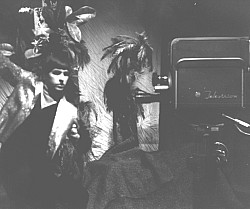 I don’t know how some of the other guys that worked in drag got their start, because when I came from Cuba these things were all new to me and I didn’t think to ask them. You see, when you are a teenager filled with vigor and dreams to be on stage, every day in your life seems to fly by quickly, but I do remember that what I did then, I would never do again, as much as I love to perform. I would walk to the 'L' (the train station in Chicago) with a heavy suitcase filled with costumes and then walk many long blocks in very cold icy wind with snow on the streets to a high rise building with a Latin-American TV Station, CH26, where I was the main performer and choreographer of an evening time slot. I had to make-up, film my sequence, and once finished, walk back to the 'L', and then walk even more blocks to catch a bus to my home, but that’s Showbiz folks!
I don’t know how some of the other guys that worked in drag got their start, because when I came from Cuba these things were all new to me and I didn’t think to ask them. You see, when you are a teenager filled with vigor and dreams to be on stage, every day in your life seems to fly by quickly, but I do remember that what I did then, I would never do again, as much as I love to perform. I would walk to the 'L' (the train station in Chicago) with a heavy suitcase filled with costumes and then walk many long blocks in very cold icy wind with snow on the streets to a high rise building with a Latin-American TV Station, CH26, where I was the main performer and choreographer of an evening time slot. I had to make-up, film my sequence, and once finished, walk back to the 'L', and then walk even more blocks to catch a bus to my home, but that’s Showbiz folks!
I’m a live performer and have always used my own voice. Even though as early as the 1960s the trend to pantomime was becoming routine for many female impersonators, I never liked to mime myself. Yes I have seen some drag performers who pantomimed well and were good at their craft, but as Craig Russell once said, he felt cheated when he saw Liza Minnelli in the Broadway hit 'The Act' pantomime to four out of five numbers. That's the way I feel. I know that if for any reason the record were to stop playing, the mime would be in a lot of trouble on stage.
Question 2: How did Finocchio’s compare to other venues of the time that featured female impersonators or current venues?
David: Finocchio’s in San Francisco, CA. and the also well-known 82 Club in New York City were nightclubs that were owned and operated by heterosexual people, at which time in history made it more palatable for the straight crowd (even if some were not quite gay friendly) to come to see a female impersonation revue and feel as much at ease as could be expected. At the time, most of the nightclubs that had revues featuring female impersonators were gay oriented and, of course, many straight people that were gay friendly did go to see such shows, mainly because they had a friend or a family member that was gay and they were OK with it. The most important part was that Finocchio’s and the 82 Club shows were done all live. Drag acts that wanted to pantomime were not allowed, which made those venues unique in the Drag Biz since in most drag shows the men pantomimed to records.
Also a few blocks from Finocchio’s was The Beige Room, another night spot that used excellent female impersonators and they all worked live. But at the end, even though Finocchio’s stage was not that big and the lighting and sound was nothing to brag about, it was Finocchio’s that survived them all.
Of course The Rolls Royce of all the drag shows was The Jewel Box Revue which was the best live drag show ever produced and executed, using big theaters as they toured The United States and Canada with a big orchestra behind the performers, along with the best and fanciest musical productions and costumes ever conceived, all by Danny and Doc, the owners and producers of the show.
Even in 2005 it is quite rare to find a female impersonator that sings live. There are a few sprinkled here and there, as in the case of the master singer-illusionist Jim Bailey who still does concerts all over the world. I know of other wonderful legendary singers like Lavern Cummings who are still alive but are not performing in drag because they are retired. Of course there is that wonderful Gypsy, who is not a singer per se, but a wonderful drag comedian and emcee who has also done some movie roles out of drag.
Question 3: Who was Finocchio's primary customer base? For example were the patrons primarily male or female? Were there families, couples, singles, older people or primarily younger audiences?
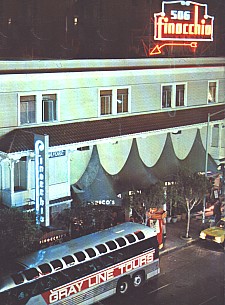 David: Finocchio’s was a tightly controlled Italian family business. The audience was primarily a heterosexual crowd, but of course there were always a few gays and lesbians who knew some of the performers or who were visiting San Francisco. Because of the bar service, no children were allowed and the age range would be from young couples in their early 20’s who went for a lark to see men dressed up like women, to a more mature crowd that enjoyed a risqué experience or just appreciated good theatre. The club was notorious for the attendance of many famous Hollywood movie Stars, celebrities and cast members of other shows in town like 'Hello Dolly' or 'Mame' or even from a circus for example. No one ever knew when they would pop in, sometimes incognito. Also the Grayline Bus tours stopped there every night with a busload of people from all over the world and who often didn’t speak English well, or at all. This diverse audience made the entertaining experience quite fascinating, at least to me.
David: Finocchio’s was a tightly controlled Italian family business. The audience was primarily a heterosexual crowd, but of course there were always a few gays and lesbians who knew some of the performers or who were visiting San Francisco. Because of the bar service, no children were allowed and the age range would be from young couples in their early 20’s who went for a lark to see men dressed up like women, to a more mature crowd that enjoyed a risqué experience or just appreciated good theatre. The club was notorious for the attendance of many famous Hollywood movie Stars, celebrities and cast members of other shows in town like 'Hello Dolly' or 'Mame' or even from a circus for example. No one ever knew when they would pop in, sometimes incognito. Also the Grayline Bus tours stopped there every night with a busload of people from all over the world and who often didn’t speak English well, or at all. This diverse audience made the entertaining experience quite fascinating, at least to me.
Question 4: What in your opinion was the popular appeal of the club?
David: Finocchio's had a reputation as a tourist attraction and was considered a San Francisco landmark (much as is the Golden Gate Bridge), and therefore, a MUST in every tourist's itinerary. Add to this the unique nature of the entertainment offered, and its appeal to the public became extremely irresistible. Everyone knew that you could see an excellent show at Finocchio’s for a very reasonable price. Now 506 Broadway where Finocchio’s stood tall for so many years is just a ghost, and lawyers’ offices occupy the second floor space. I bet ghosts of former performers who worked at Finocchio’s roam at night still trying to put on a show. Who knows, maybe they perform to members of the audience who saw them then and who also have passed on!
Even to this day when I tell people that I worked at Finocchio’s (and the club has been closed for quite awhile) I still hear them say: "Oh really, I was there more than once!" or "I heard so much about that club, sorry I never made it to see any of their shows because I was too young to get in the door!"
Question 5: What do you feel is the most important cultural contribution or impact Finocchio’s had on society?
David: Finocchio’s presented to the heterosexual population a healthy picture of gay entertainment in a revue filled with talent and comedy suited to all types of audiences. Its tasteful, legendary revues, featuring some of the greatest performers of this genre, earned the public’s love and general acceptance. This trademark ensured the clubs’ success for a 63-year long run, and legitimized the art of female impersonation.
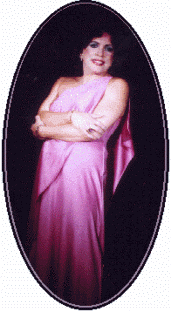 It could probably have continued for a longer period of time in spite of the decline in the art of female impersonation’s popularity. However, our world is constantly changing, and we always hope that evolution will bring good things to civilization. Unfortunately, in my opinion, this is not always true. Take for instance the gradual changes in the music world, or the good old-fashioned art of striptease. In the old times, striptease was a mysterious, elegant, and discreetly tantalizing dance. It has now been replaced by total nudity, violent movements simulating lewd acts, leaving nothing to the imagination, thus removing all subtlety and class from this old art form.
It could probably have continued for a longer period of time in spite of the decline in the art of female impersonation’s popularity. However, our world is constantly changing, and we always hope that evolution will bring good things to civilization. Unfortunately, in my opinion, this is not always true. Take for instance the gradual changes in the music world, or the good old-fashioned art of striptease. In the old times, striptease was a mysterious, elegant, and discreetly tantalizing dance. It has now been replaced by total nudity, violent movements simulating lewd acts, leaving nothing to the imagination, thus removing all subtlety and class from this old art form.
The Art of Female Impersonation, once a tasteful presentation of male performers imitating females, has followed the same route. The elegance, the propriety, the talent that mesmerized yesterday’s audiences and kept within the standards of a family oriented form of entertainment, has been replaced by similar traits, in favor of sensationalism, where talent and respect for the public has no place. The 'new wave' now prefers to pantomime to recordings (lip-sync), shock the public with vulgarity to get a few laughs, and has replaced talent by emphasizing appearance through all types of cosmetic surgery.
Question 6: What was the typical dinner menu? How much did things cost? Was the food fancy or simple? What kind of drinks did Finocchio’s serve?
David: In 1968 when I was not yet a member of the cast but was styling wigs for some of the entertainers, the entrance was $3.50, and you could stay for all four shows. On certain holidays, such as New Year’s Eve the price was raised a little, and also years later the entrance fee was increased, but nothing like the ridiculous prices that one has to pay for a show nowadays here in Las Vegas or in New York. One nice thing about Joe and Eve Finocchio was that they never charged cast members or our immediate family that came with us to see their show, even after we were not members of their cast. In fact there was a joke running among us performers that we had a life-time pass to see the show anytime we decided to pop into their club.
I remember in the ‘70s, a lot of people ordered popular drinks such as a Screwdriver or Bloody Mary for about $1.25. You could order fancier drinks like a Mai Tai or Black Russian for 25 cents more and there was no drink minimum. They did not have any food being served then, but later on, I think in the early ‘90s (I was living in New Mexico then) after Mrs. Eve Finocchio got rid of the musicians and the show became pantomime, I heard some type of food was served. In the early beginnings of the club, I don’t know if food was served. All of the Artists from those days have passed on and I have no way to find the answer. There is no mention of food service in any of the old programs.
Question 7: How profitable a business was the Finocchio Club at the climax of its run?
David: From what I heard from some of the old timers that were still performing at Finocchio’s when I first joined the cast in the early 1970’s, the owners had a beautiful yacht and a very expensive mansion in the Twin Peaks area. At its beginnings, when the club was owned by Joe Finocchio’s first wife Marge, the audience was filled with crowds of people from all over the world, four shows a night, six days a week, and good money of course, pouring in. There were many members of the Finocchio’s family that at one time or another worked at the club in different capacities. From what I heard and read, the club started to go down hill in the early ‘90s.
I remember when my room-mate, comedian Russell Reed saw the long lines of people from a small window in our second story dressing room, waiting to get into the club for the next show, would poke his head into singer Lavern Cummings’ dressing room and say to him loudly: "Empress Lavern, (that’s how he always referred to Lavern) have you seen the long lines waiting to get into the club?" Lavern would reply with an ‘I don’t care’ attitude "Where’s the money Russell?" meaning that no matter how long the lines of people were, it would not raise our salaries.
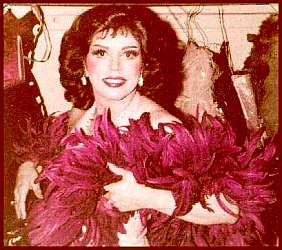 Question 8: Did you provide your own costuming? Did Finocchio’s help to fund or design costuming?
Question 8: Did you provide your own costuming? Did Finocchio’s help to fund or design costuming?
David: Entertainers like myself who were hired as starring acts had to pay for every costume we wore, for our musical charts, etc., but if a performer were part of the ‘The Eve-ettes’, (the chorus line created by choreographer Joel Nobel and named for Eve Finocchio) all of his production number costumes were provided free of charge by the establishment.
But the most expensive part of all, at least for me was that I had to pay for all my fancy musical arrangements for the club’s trio. I had many musical charts to choose from and Mrs. Eve Finocchio knew that. Anytime she needed to fill space in the show she would ask me to do an extra song or two and she knew that I would not repeat myself (musically speaking) on stage, because I had enough material to do a solo concert if I had to, and which I did many times outside Finocchio’s when I was on my own.
Question 9: What was the means of training and / or recruiting new Finocchio’s performers?
David: At Finocchio’s, if you had a reputation as an established drag performer in the Biz, as for example the late Great Lucian, 'The Male Sophie Tucker', you were brought in directly to the show; but others, even if you had a long resume of doing drag, had to audition for the owners.
The trouble was, and still is, that not all the female impersonators could sing well in drag in a ‘femme’ voice, or do jokes live or even dance well, and although there is a certain skill to be a pantomime artist, those performers were shunned by the owners for many years. Finocchio’s was one of the very few drag shows here in The United States where all the entertainers had to perform live, of course with the exception of the lavish Jewel Box Revue and 82 Club in New York.
One time Eve Finocchio put an ad in the local newspaper for new drag faces. Well my dear, I don’t want to sound ‘bitchy’, but I never in my life saw so many ‘dogs’ in the audience waiting to be called to audition. It was not as easy as the owners thought to find men who would look pretty in drag and also have the talent to entertain. Of course if you were a comedian, you didn’t have to be glamorous or a good singer, but it didn’t hurt. Finocchio audiences relished in seeing beautiful women on stage and often found it hard to believe they were really men in drag.
Question 10: Was Finocchio’s a full time endeavor for the performers or did many of them have other jobs?
David: Most of the members of the cast did not have a fallback trade, except for smart FIs like Carroll Wallace, who was a real estate investor, and myself for example, who has been a professional cosmetologist since 1965 in Chicago where I graduated. Many times when asked to be a guest artist at the club, Eve Finocchio would remind me that I had a career as a hairdresser and did not need the job at her club as many of her chorus line artists did. Also she knew Carroll Wallace made a lot of money in real estate. Carroll complained to me on several occasions he didn’t get good raises because Eve Finocchio thought he didn’t need the extra cash. Carroll was upset because he had a very hard job as emcee of the show, and he also had to do the stage lighting and sound, which was not easy and very tiring on his feet to be standing for the whole show.
Question 11: How organized did the Finocchio’s business have to be in order to be run smoothly or was it a chaotic atmosphere?
 David: Finocchio’s was a well organized family owned and operated club. In the early years it was run by Marge Finocchio with an iron hand. [Picture of Marge on right] The club was so successful and profitable it was moved from a basement speakeasy at Stockton Street and Sutter to its final location above Enrico’s Café on the Broadway strip. During the week Eve's sister, María Filippis, collected the entrance fee at the cash register located at the top of the entrance stairwell.
David: Finocchio’s was a well organized family owned and operated club. In the early years it was run by Marge Finocchio with an iron hand. [Picture of Marge on right] The club was so successful and profitable it was moved from a basement speakeasy at Stockton Street and Sutter to its final location above Enrico’s Café on the Broadway strip. During the week Eve's sister, María Filippis, collected the entrance fee at the cash register located at the top of the entrance stairwell. 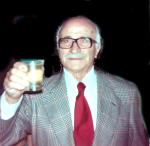 However it was Eve Finocchio herself who worked the register every Saturday night, while Joe Finocchio [Picture of Joe, 1977, on left] and the choreographer / host escorted the paying customers to their seats. Who in the world would have suspected that the actual owners of the club were personally greeting the customers; in contrast to today, when any business that deals with theatrical entertainment is owned by big corporations and it's rare to meet the real owners or hiring staff.
However it was Eve Finocchio herself who worked the register every Saturday night, while Joe Finocchio [Picture of Joe, 1977, on left] and the choreographer / host escorted the paying customers to their seats. Who in the world would have suspected that the actual owners of the club were personally greeting the customers; in contrast to today, when any business that deals with theatrical entertainment is owned by big corporations and it's rare to meet the real owners or hiring staff.
During my run at the club I was not impressed with the management style. Decisions were made on a more personal or emotional basis rather than on good business practice. With all the instigation from some of the staff, especially the choreographer, and from some members of the cast, the club earned the reputation among drag artists all over The United States as "The House of Hate". Thank God, the audiences were marvelous, otherwise for me, at least mentally, I could not have come through it in one piece; but I did . . . and I am still together . . . and we are in the Year 2005!
Question 12: Did Finocchio’s exert much control over the performers acts on stage and lives off stage and if so in what ways?
David: The owners maintained total control over the production numbers and once in a while they would say I don’t like this or that in some of the main acts; take out this particular song, etc., which was not fun at all, because a three piece musical arrangement for their trio; piano, sax and drums, did not come cheap, even then. The only person they didn't fool around with was Lavern Cummings. He was considered the highlight of the show and he did not give in easily to Mr. or Mrs. Finocchio, even if they weren’t too crazy with his choice of songs, which by the way, were superbly arranged for him by local musical conductors.
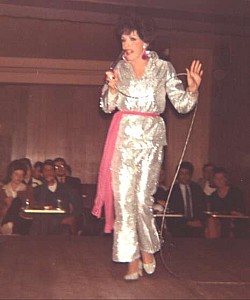 Toward the end of the ‘80s, after Lavern Cummings had retired, Eve Finocchio would call me on the phone when she needed me to fill in for someone in the show: "David, you have so many acts to choose from, your Judy Garland and Liza impersonations, your International Boy-Chic act (in which I sang in Spanish and English as myself) and your singing clowns; do them all during the course of the night!" I did of course, and it was not easy with all the costume and make-up changes. At the time I was taken for granted, and not appreciated the way I should have been by the owners.
Toward the end of the ‘80s, after Lavern Cummings had retired, Eve Finocchio would call me on the phone when she needed me to fill in for someone in the show: "David, you have so many acts to choose from, your Judy Garland and Liza impersonations, your International Boy-Chic act (in which I sang in Spanish and English as myself) and your singing clowns; do them all during the course of the night!" I did of course, and it was not easy with all the costume and make-up changes. At the time I was taken for granted, and not appreciated the way I should have been by the owners.
Years later when I had an award winning theatrical Web site composed for me by my partner of many years, I would get all kinds of e-mail from people around the world who had seen me at Finocchio’s at one time or another and would tell me how much my act meant to them. Even some new generation female impersonators would tell me that I, along with Lavern Cummings, was their inspiration as drag artists. That meant more to me than any of the bittersweet memories that I had from working at the club.
Originally the club had strict standards about not hiring transexuals or boys with surgically altered bodies. They wanted to maintain the contrast between their male and female personas. When I was at Finocchio's there were some entertainers, members of the chorus line, that got away with taking hormones to have some kind of small breasts and to look even more girlish on stage because their skin got softer and the hair longer and shinier. One even had full breast implants (whose name I won't mention). We all were shocked at Joe and Eve Finocchio for allowing that, since they were very strict with the rest of us in the cast. We were never to come in drag to their club or leave in drag either, but some of The Eve-ettes got away with things that no one else could at Finocchio's. They (the owners) had two set of standards at the club it seemed. As my friend and emcee Carroll Wallace used to say to me from time to time: "At Finocchio's some of us are considered pets and some pests."
However, the professional female impersonators in the Drag Biz that I knew and worked with never agreed with having altered bodies such as breast implants, as so many of the new FIs working nowadays do, because it defeats the premise of female impersonation in the first place. It is more than OK if you have plastic surgery to look younger or prettier on stage, as many have done at one time or another, but permanently altering their bodies by having breast implants and/or taking female hormones, that's a different bag. If they go that far they should just call themselves 'entertainers', not FIs. If a male entertainer wants to alter his body with breasts and even have a complete sex change, that's fine. He should do it by all means if it helps him fit properly in a heterosexual society. If it makes him feel happy and complete as a person, no one should criticize him. I am just referring to the definition of what an FI is supposed to be; a guy that can transform his male body into a believable facsimile of a woman for the singular purpose of entertainment. Once an entertainer leaves the stage and walks the street in drag he is a transvestite, not an FI. If it makes you happy doing so, that's fine, but please don't call yourself a female impersonator. This is not just my opinion, but most of the FIs I had the pleasure to work with at Finocchio's felt the same way. We spoke about it quite often backstage.
Question 13: Moreover what was your relationship with Eve Finocchio and the other managers. Was the Finocchio family always closely involved in the club and organizing productions?
David: You see, what happened was that originally Joe Finocchio married ‘Marge’ his first wife and she was the one responsible for getting the name Finocchio’s spread all over the world as a legitimate drag nightclub with the best world class entertainers performing live. But when Joe Finocchio decided to divorce Marge and marry Eve (as I was told by some of the Old Timers), Marge still owned half of the club. She told Joe that as long as she was alive, his new wife Eve would not be allowed in her club . . . so when Marge died, I was told that Eve took over with a vengeance. She changed everything, even taking down huge photos of the drag artists that were hanging in the club and outside on the street. She hired new musicians, and so on. There was a funny anecdote that Carroll Wallace told me that if any of us wanted to be fired on the spot, all we had to do was to sing the popular old song 'Margie'. Obviously I never did, nor did anyone else while Eve was the new owner. Mind you I never got to meet Marge because at that time I was still a young child living in Cuba until Castro took over and I left for The United States . . . another long story.
Joe and Eve Finocchio visited my home once in San Francisco and also came years later to visit me at my hair salon because they needed me to emcee that week for an ailing Carroll Wallace. Eve wanted to instruct me how to do it, though I had seen Carroll do it many times and knew more or less what to do. Also my partner and I visited Joe and Eve’s home once to deliver a Betamax video tape recorder that they purchased from me.
My relationship with Eve was rather casual in person and on the phone. I tried not to talk too much with her because of her mood swings . . . she could be the sweetest lady to talk to and then all of a sudden she could turn on her worst side and be quite unpleasant. I, on the other hand, being a loyal Taurus, have a very stable personality and try always to be pleasant to people, no matter what comes my way.
Question 14: Were there group acts - multiple impersonators performing a set together - or were they mainly individual acts? How were shows organized?
David: There were mostly individual female impersonators doing their own acts of singing, comedy patter, and dancing; and novelty acts like puppeteers and ventriloquists, and of course the emcee who held the show together. In the time that I worked at the club the only time performers worked as a pair or in a group was during the middle and finale productions. In the early days of the club there were famous duos such as 'The Old Bags of Oakland'.
Question 15: What was it like before a performance? What was it like getting ready behind the set?
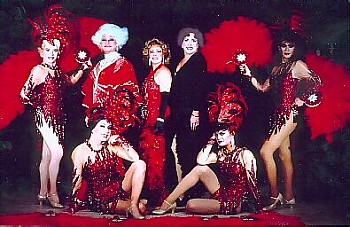 David: It was a very solemn process and although most people in the audience probably imagined there were orgies upstairs and clowning around, it was never so. We entered at seven pm sharp by a side door on Kearny Street, off the main Broadway entrance, and went upstairs to make-up. You would only hear the soft sound of a radio from someone’s dressing room. Make-up would take an hour or more, and then we went to the bathroom, put on a wig and started getting into the appropiate costume. About fifteen minutes before nine pm the emcee would blow a whistle to let us all know that SHOWTIME was approaching and the chorus line, which opened the show had to get downstairs quickly and whoever was the first supporting act that followed. I started at the club as an opening act and when Lavern was absent I got to close the show in the Star spot, which was fun.
David: It was a very solemn process and although most people in the audience probably imagined there were orgies upstairs and clowning around, it was never so. We entered at seven pm sharp by a side door on Kearny Street, off the main Broadway entrance, and went upstairs to make-up. You would only hear the soft sound of a radio from someone’s dressing room. Make-up would take an hour or more, and then we went to the bathroom, put on a wig and started getting into the appropiate costume. About fifteen minutes before nine pm the emcee would blow a whistle to let us all know that SHOWTIME was approaching and the chorus line, which opened the show had to get downstairs quickly and whoever was the first supporting act that followed. I started at the club as an opening act and when Lavern was absent I got to close the show in the Star spot, which was fun.
During my run there were four, one hour shows per night from 9 pm to 2 am, six days a week, dark Monday. Between shows we barely had time to take off the wigs, costumes, high heels and earrings to rest a little, and drink or eat something, (which I or Lavern Cummings never did because it was hard to sing on a full stomach).
After the fourth show ended, it was chaos upstairs, many of the entertainers talking loud in their dressing rooms, going to the bathroom for the last time before heading home and of course taking off all the stage make-up to leave the club as men. As I mentioned before, Joe and Eve Finocchio did not tolerate any of us entering or leaving the club in drag.
Question 16: How long did you work at Finocchio’s?
David: I started at Finocchio’s in 1971 and had a long run as a permanent member of the cast, which was constantly changing as new acts were hired to replace those that were let go.
 After being at the Club for about two years I asked Mrs. Eve Finocchio permission to take off for four days to have some plastic surgery done on my upper eyelids and she agreed. Even though I was only in my early 20’s, I still wanted to look as perfect as I could on stage, as many of the other FIs there had all kinds of plastic surgery done.
After being at the Club for about two years I asked Mrs. Eve Finocchio permission to take off for four days to have some plastic surgery done on my upper eyelids and she agreed. Even though I was only in my early 20’s, I still wanted to look as perfect as I could on stage, as many of the other FIs there had all kinds of plastic surgery done.
A former Finocchio FI, a dear friend of mine, drove me down the peninsula to the plastic surgeon, waited until the procedure was done, and then took me back to my home in San Francisco in his own car. Two days passed by and I had no inquiries from Mrs. Finocchio about how I was doing, so I decided to call her and let her know that I could be back anytime. To my shock and surprise she told me very coldly that I had been replaced by someone else. I had to go back to the club to pick up all my costumes, make-up cases, wigs and musical charts and also to pick up my check and severance pay they had already prepared for me. As I went upstairs to my former dressing room, the FIs from the cast who saw me were silent, except for dear old Carroll Wallace who said to me "How could you take off during the busy season to do that! Others in the cast who choose to have plastic surgery do it during the Christmas vacation not to get fired." Well, how was I to know!
One or two weeks later I went to the club to deliver some of the wigs that I still did for the performers and Eve Finocchio was aware of that. I felt so betrayed because my replacement was not a prettier FI or more talented either . . . in fact everyone agreed he looked hideous. What I didn’t realize at the time was that there was a new cost cutting trend going on at the club. Mrs. Finocchio was getting rid of the main supporting acts and replacing them with members of her beloved chorus line, 'The Eve-ettes'. They now had two jobs, being in the chorus and then as main supporting acts. So there you had it, two acts for the price of one!
As time passed by, I became what I called a ‘constant guest Star’. Mrs. Finocchio called me often to replace emcee Carroll Wallace if he were sick or on leave, or when singer Lavern Cummings, the last major talent of the show, would be off for whatever reason. Carroll Wallace would refer to me as "Mr. and Mrs. Finocchio’s Old Shoe". Also Reggie Dahl, a fabulous dancer who had a strange, wicked sense of humor, would shout from his dressing room as I came upstairs, that David de Alba kept his musical charts, make-up, wigs and costumes in the trunk of his car ready to go, so when Mr. or Mrs. Joe Finocchio called him all he had to do was start the car. This went on until 1989 when I, my partner of many years and my parents left The Bay Area and moved to New Mexico, for reasons beyond our control.
Question 17: What were your feelings upon leaving Finocchio’s or about it closing?
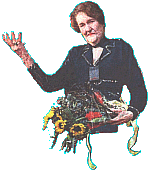 David: I was not there when Finocchio’s closed its doors, but I spoke on the phone to Eve Finocchio when I was living in Arizona. [Picture of Eve on right] I told her it would be nice if she would have members of the cast that were still alive from the golden years, parade on stage one last time and do at least part of their act. Her answer was, because she had a ready answer for everything, "David, I think it is best for everyone to remember you and the rest of the cast the way you looked then!" Well, I don’t know what she meant by that, because I certainly was not decrepit looking yet and still have a lot of mileage left in me! You see when I joined the cast, I was the youngest of the supporting main acts.
David: I was not there when Finocchio’s closed its doors, but I spoke on the phone to Eve Finocchio when I was living in Arizona. [Picture of Eve on right] I told her it would be nice if she would have members of the cast that were still alive from the golden years, parade on stage one last time and do at least part of their act. Her answer was, because she had a ready answer for everything, "David, I think it is best for everyone to remember you and the rest of the cast the way you looked then!" Well, I don’t know what she meant by that, because I certainly was not decrepit looking yet and still have a lot of mileage left in me! You see when I joined the cast, I was the youngest of the supporting main acts.
Question 18: Did the majority of the female impersonators working at Finocchio’s continue in this profession after the club closed, or did they move onto other things?
David: Since there were no nightspots equivalent to Finocchio’s then or now that has live female impersonation shows, for most of those who were excellent on stage and retired from the Biz or were let go, their careers ended abruptly. Some did continue working part time at their craft. For me it was not as easy task. After leaving Finocchio’s I moved to New Mexico and then to Arizona and now that I am living in Las Vegas I always try to keep my craft alive somehow, doing some TV shows and live concerts here and there, plus I became a respected Celebrity Interviewer on my Web site. In addition to many famous female impersonators and other Showbiz celebrities, I interviewed such greats as singer Robert Goulet and the late actor Buddy Ebsen, among others.
Recently I have concentrated on recording, and to date I have eight CDs that can be obtained via my Web site. Hopefully by the end of this year with the help of Miss Linda La Blanche, my present musical director, accompanist and dear friend, I will have my 9th CD released with all kinds of new songs. She has been a great pillar of strength, knowledge and talent in my life, keeping my career alive and I am very lucky to know her.
Question 19: What was the worst day that you had performing there?
David: Being fired (or ‘let go’ as Mrs. Finocchio preferred) is never a pleasant experience, but I said to Mrs. Finocchio once: "Why when one is fired from your Club, does your sister María bring to the performer being ‘let go’ that week's check and severance pay just as he is coming off stage in a warm glow of applause? The answer was "Why, if he knew ahead of time, you never know what he might do or say on the microphone while he's on stage." I answered "In my case I am a gentleman and would never do anything irrational. I don't know what kind of people you hire here that you feel they would do such a thing on stage." I said to myself later on; I know that M.G.M. and other movie studios could be rather cruel when letting their Stars go, but in the case of Finocchio's, supposedly being run by a warm Italian family, it was hard for me to reconcile the cold heartedness. Well, we live and learn . . . that's the cruel Showbiz world for you.
Question 20: What was the craziest / funniest thing that happened in your time there?
David: One thing I remember that is quite funny, is that there was an African-American drag artist that was hired by the Finocchios by the name of ‘Pepper’ who was also part of the chorus line, The Eve-ettes. One night he was so very late coming to the club and getting ready in the dressing room that when he finally appeared on stage after emcee Carroll Wallace announced his name at least twice, he was not in full stage make-up and only had on the first foundation base that all FIs used called ‘clown white’. Well, he looked more like ‘Salt’ than ‘Pepper’. He looked so funny that people thought it was part of his act, but it wasn’t.
Oh, by the way, while this took place on stage our mischievous emcee Carroll Wallace was roaring with laughter in the wings and poking fun at the whole situation. I’m sure someone must have called Mrs. Finocchio the next morning (these phone calls from people instigating against some of the performers were notorious), because Pepper was always on time from then on and no incident like that ever took place again!
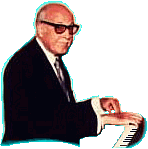 Question 21: What is your fondest memory of your time there?
Question 21: What is your fondest memory of your time there?
David: My fondest memory is having worked with some of the most talented artists in the drag world such as emcee Carroll Wallace, comedian Russell Reed, Cuban dancers Bobby De Castro and Juan José , Mexican dancers Marlo Adame and René de Carlo, singers Lavern Cummings and Carey Davis, comedian Jackie Phillips, The Great Lucian, comedian / singer Elton Paris, and a beautiful dancer by the name of Holly White, and that wonderful musical conductor, pianist and musical arranger, a very sweet soft spoken gentleman, Mr. Bill Bullard, [Picture of Bill on right] and last but not least, playing to many famous celebrities and some wonderful audiences from all over the world.
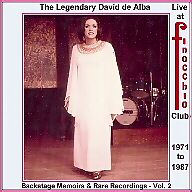 This is why I released a while back, two CDs, Volume 1 and Volume 2, about my most memorable backstage memories along with some of my so called ‘Finocchio Club Song Hits’ that were taped live on stage. This is quite rare material for collectors of female impersonation memorabilia and they can be obtained via my own Web site at: http://david-de-alba.com Colorful insights of many of these wonderful entertainers, most of them passed on by now, will be preserved for ever through my narrations.
This is why I released a while back, two CDs, Volume 1 and Volume 2, about my most memorable backstage memories along with some of my so called ‘Finocchio Club Song Hits’ that were taped live on stage. This is quite rare material for collectors of female impersonation memorabilia and they can be obtained via my own Web site at: http://david-de-alba.com Colorful insights of many of these wonderful entertainers, most of them passed on by now, will be preserved for ever through my narrations.
Question 22: Are there any memorable anecdotes you would like to share with us about your time at Finocchio’s?
David: One time word was out that some of the musicians and entertainers were complaining that I was changing my music too often. Well, I didn’t want to get stale, you see. There was never any real rehearsal time with the trio. Carroll said to me, "David, don't change your music so much, just repeat your songs." I replied "I'm spending a lot of money on new arrangements and no one here seems to appreciate it." Russell Reed heard about this. He was a very heavy act. They called him the "Ton of Fun". His act was in part about his weight. He would always call Mrs. Finocchio "Madame." Russell said one evening to her in the wings, "You see, Madame Finocchio, I never change my act." She replied, "That's the problem." Russell said to me, "David, I'm going to have a new act, new costume, and new make-up; don't tell anyone."
One day he said, "David, tell everyone to come to my dressing room before the fourth show for a surprise." I got all The Eve-ettes out of their dressing rooms. His new song was called Joshua. (singing) "Joshua, Joshua, oh what a lovely boy you are." I thought the song was awfully cute. Now out comes Russell . . . what a sight; an older, heavy man, dressed like a little girl with a Shirley Temple wig. He looked more like Bette Davis in 'Whatever Happened to Baby Jane.' Then Reggie Dahl and some of the Eve-ettes started screaming, laughing, and carrying on. Russell finally launched the new act toward the end of the night. He went over to Mrs. Finocchio and said, "Madame Finocchio, what did you think of my new act ?" There was a very cold silence. I don't remember if she said anything. He looked stunned.
Meanwhile Carroll seized the opportunity to rub salt in the wound by singing a few bars of Joshua every time he went up and down the stairs. Russell hated that! A few weeks later, Russell Reed was no longer in the show. I said to myself, Isn't it sad. This man put together a new costume and a new arrangement that cost at least $150. As Mrs. Finocchio would say to me, "David, we don't fire people, we just let them go. The show has to change sometimes". But at what cost!
Here is another anecdote; this was funny: Half an hour before the fourth and last show was to start, Mrs. Finocchio’s sister María Filippis ran upstairs toward our dressing rooms and shouted to emcee Carroll Wallace [Picture of Carroll with David on left] that we had no one in the audience and she was going to cancel the show, and to announce it to the cast. To Carroll’s delight, since we worked very hard on the three previous shows, he blew the whistle and told us to get ready to go home early. Meanwhile, my Finocchio roommate, comedian Russell Reed looked at me slyly and said in a whisper, "David, don’t believe a word from Carroll Wallace. Don’t you dare take off your make-up. Carroll is trying to get us in trouble with the house!" The house meant Mr. and Mrs. Joseph Finocchio.
A few minutes passed by and María ran upstairs again and shouted, "Carroll, three people just walked in and we have to do the last show after all!" Carroll blew the whistle again, shouted, "SHOWTIME" and announced the bad news to the cast who, including Carroll, had already removed their wigs and part of their stage make-up.
Meanwhile Russell said to me, "What did I tell you David? It was all Carroll’s doing". I told Russell that it was not true because I heard María make the announcement to cancel the fourth show, and why would Carroll go through all the trouble to take off his own glue-on wig and make-up? Carroll and Russell did not like each other very much and I never did find out the reason. I heard that at one time Russell worked for Carroll in a revue that he had formed between his Finocchio gigs.
Anyway, as the show opened with The Eve-ettes, you could see the expressions on the faces and hear the laughter of the few people in the audience. The Eve-ettes appeared with partial face make-up, no false eyelashes and their street pants rolled up under their skirts. As they would do a high kick on stage, you could see men’s pants instead of girlie type stage underwear. Even Carroll’s own wig was not glued on and looked like it could bounce off his head at any moment.
As the show progressed and the middle and finale productions came on, The Eve-ettes face make-up progressively improved between appearances, repairing it while acts like Lavern Cummings, Russell Reed and I were on. By the last entrance, all were perfectly made-up and gowned, as though nothing had happened.
From then on there was a note on the blackboard upstairs for the cast that there will always be a fourth show whether there is an audience or not. If the club was empty, it provided an opportunity for any of us singers to break in new arrangements with the band trio headed by Bill Bullard.
 Ending note from David de Alba: I want to thank all of you for this interview you are giving me and for letting me share some of my show memories and helping to keep alive the stage names of these entertainers. [David on right, Las Vegas, 2005]
Ending note from David de Alba: I want to thank all of you for this interview you are giving me and for letting me share some of my show memories and helping to keep alive the stage names of these entertainers. [David on right, Las Vegas, 2005]
I only speak the truth here from my heart, though some people may not agree with me . . . that’s fine . . . it happened that way. I am also very grateful that in spite of some of the bittersweet times I had at Finocchio’s because of its notorious instigations, I also had some great times with some of these wonderful entertainers, on stage and off, that I mention here on this interview. Others were mean and nasty and I try to forget them and their actions and I do not mention them here, but I am also very grateful to Eve Finocchio in particular because of her letting me be part of her club’s cast. I tried my best then, spent hundreds of dollars in many musical arrangements and minded my business, but if to play politics was required, (excuse my French), to kiss ass, I never did. Perhaps that was my biggest handicap!
Visit the award winning Web Site "David de Alba’s Theatrical Arts & Tributes" at
http://david-de-alba.comIf anyone wishes to book him for a gig in the Las Vegas area, you can e-mail him at david-heri@cox.net
NOTE: Many thanks to Tony Midnite for providing the rare picture of Joe Finocchio for this interview.